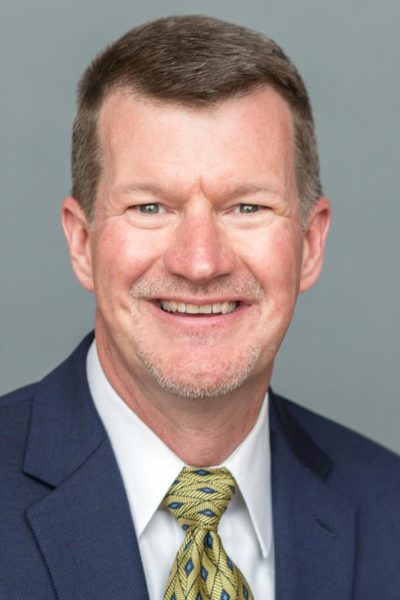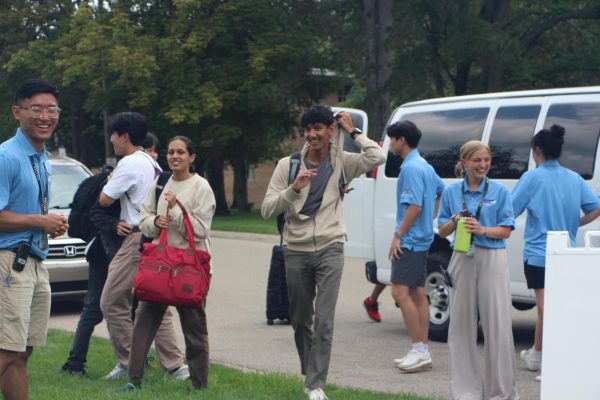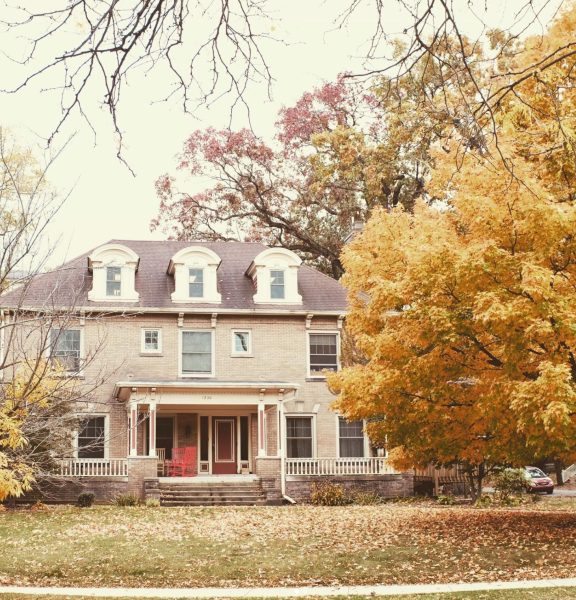Offering food attracts students to events, and other strategies for student involvement
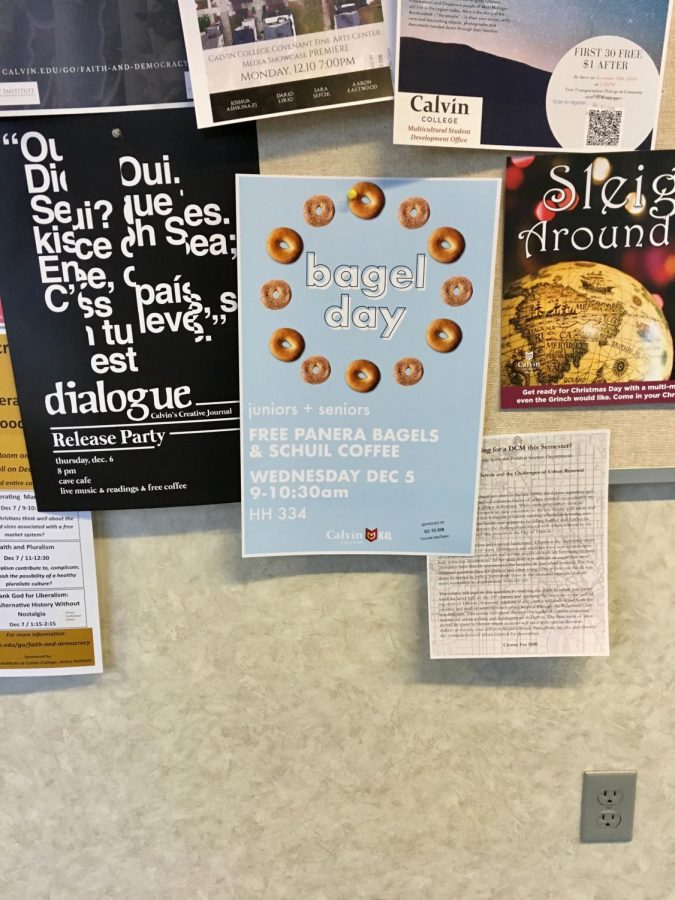
Poster image courtesy of Knights for Life
Poster advertising free food for students
There is a lot of demand for students’ time and with that comes a competitive market. Calvin has 83 active student organizations, with organizations with fewer than ten members to the nearly 350 students involved with Dance Guild, according to Calvin’s website. Meanwhile, student life, residence life and other groups host a lot of events for students.
With all of these opportunities, on top of students’ academic lives and jobs, it can be hard for students to choose what to do, and there are strategies organizations can use to get students to come to their events.
One major incentive is free stuff. Senior Alese Owens said that all of the events she has gone to, aside from events in Visual Arts Guild, where she is on leadership, have involved either free food or free entertainment.
“I go to [free Calvin] movies religiously; I never miss the movies,” she said, mentioning she was excited for the free showing of Ant Man and the Wasp this weekend. The free movies Student Activities Office (SAO) puts on attracts a lot of students. Senior Mackenzie Owens, who works for Event Services as Head Usher, said that most movies attract 100-350 students, and the recent showing of Crazy Rich Asians attracted around 700.
Food is the biggest incentive for Owens, however. This semester she has donated blood twice, gone to the political science departments election night watch party, gone to an event for TEDxCalvinCollege — the poster for which offered “Free food (and TED talks)” — as well as many other events, all for free food. She explained that events with food are easier to go to, because she doesn’t have to worry about missing a meal time during her busy schedule.
“Plus, I also am for the first time budgeting food for myself, since I’m in the apartments,” she said, “and don’t have a meal plan, so going to things that offer me stuff that I can eat is really helpful.”
This is similar to many other students’ experiences as well. Recent graduate Nicole Lichti, the KE programming intern, said that most KE events have some type of free food.
“Food is a large part of the culture here in KE,” she said, explaining that, like Owens, many students are cooking for themselves for the first time, so free food is a big incentive.
“We know our events that include food are going to have a larger turnout than those events that don’t include food,” she said, saying that this semester events with food will often get around 40-60 students, while events with no food or just snacks usually get around 10-20 — though she noted other factors affect these numbers, too, like when the in the semester the event is taking place, and what events are happening at the same time.
Junior Joshua Polanski, who works at the Rhetoric Center and works as the religion editor for the Chimes, said that once Write Night started offering better food, the amount of students attending more than doubled.
Vice President for Student Life Sarah Visser agreed that food is a great way to get students involved, pointing to how many stories in scripture involve both food and fellowship.
“It’s clearly an important aspect to sharing life and faith together,” she said. “When folks in the Calvin community share food and fellowship, they are practicing communion, and, actually, shaping our community.”
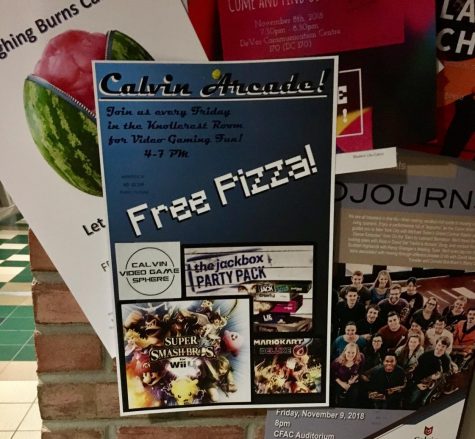
Professor Kathi Groenendyk, co-chair of the department of communications, said offering students things for free is a persuasive strategy. She explained that there are a lot of persuasive theories and research which can be used to create effective communication messages. One such theory is the rule of reciprocity, which she teaches about in the Persuasion & Propaganda course.
“The idea [is] that we’re motivated to return favors, so we’re motivated to do something if we’re offered something free,” she said, pointing to psychology research which shows its a strong motivator for people. For college students on a tight budget, offering favors of free things is going to be very effective.
“If you can communicate that ‘Hey, if you come to our meeting we’ll give you free pizza,’ a lot of a students are going be drawn to it,” she explained, “because it’s free, and then they’re there and they’ll probably want to get involved.”
However, she warned that if too many events are offering free food, becoming oversaturated, the technique could become less effective, as it “loses the appeal of the favor.”
She recommended organizations look at other ways to use the rule of reciprocity. Organizations can see if there’s something else to offer to make them stand out.
“Making your brand different from what everyone else is doing will help you be more appealing than to others,” she explained.
Organizations have found other strategies to be effective in getting students involved as well. Lichti explained she has found offering “a diverse array of components to our events” will successfully get a bigger and more diverse group of students involved.
“For example, when we hosted a Popcorn Movie Night,” she said, “the PAC (Programming Activities Council) and I made an effort to pick a variety of movies for students to vote on that didn’t just appeal to one type of audience.”
Meanwhile, Karolyn DeKam, co-vice president of the Calvin charter of PERIOD, said that Cokes and Clubs was very effective in getting students involved with the new student organization. Cokes and Clubs is an event held at the beginning of every semester, where students can get free Coke Floats and information about student organizations.
“We put in effort to ensure the best side of our organization was shown so people could gain a good understanding of what we do and how they can get involved,” she said. At the event, the club gave out twizzlers with information about the club — making use of the rule of reciprocity. At the event, 186 students signed up for the group’s email list.
DeKam also said that for their last packing party, they put up signs on the doors to the dorms, with candies attached to reminders for their event.
“Though this was a new idea, we heard from some students that, from their perspective, it got people living on campus to talk about the event,” she said. The club has also found social media and word of mouth to be effective.
Visser said another strategy is approaching students directly, explaining that students tend to respond well if directly and personally recruited “because of their unique leadership potential and skill sets.” She also said fostering opportunities for first year students is effective.
“One of the reasons I love incorporating first-year students into campus projects and events is because it gives them an opportunity to flex their leadership muscles early on,” she said, “and it opens doors to future opportunities.”
The strategies student organizations and student life are using certainly seem to be effective — Visser said that Calvin has over 800 student leaders across campus, through student organizations, dorm leadership and other leadership opportunities. Students have a multitude of ways to get involved, and it seems many are taking advantage of the opportunities they are given.




